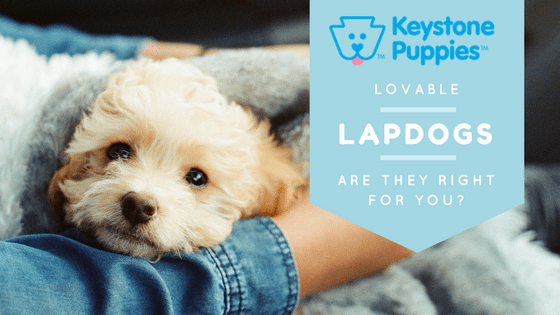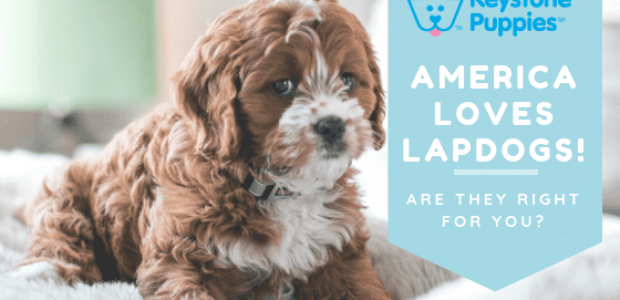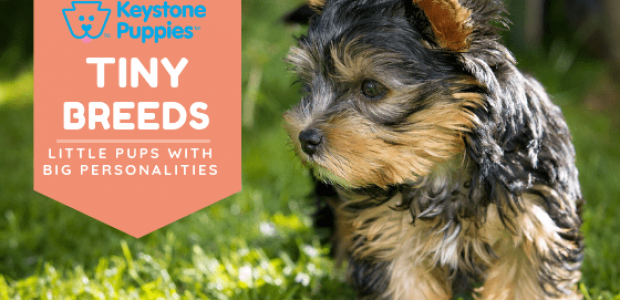Lovable Lapdogs: Are They Right for You?

While some owners of larger breeds will tell you their dogs love crawling onto their laps, many smaller breeds and toy breeds were meant to snuggle. “Lapdog” is an informal term for almost any type of dog that is both small and friendly. More formally, it refers to a variety of companion breeds with a gentle temperament, and a loving and obedient nature. These pups are usually relaxed dogs who do not crave long periods of energetic exercise. Lapdogs are sweet companions that offer their owners warmth and comfort. They are an excellent choice for families that can spend a lot of time with the dog and might be a smart choice for owners who don’t have the time or space to provide lots of vigorous physical activities for their pup.
Not all small dogs are lapdogs. Many small breeds were bred to hunt, kill rats and vermin, or guard homes and barns. These spirited little pups often lack the calm demeanor associated with lapdogs. Many fall into the Terrier group, like the Jack Russell Terrier and the Cairn Terrier. The French Bulldog and other bulldog breeds usually make good companions but were originally bred as working dogs.
Owners of small working or hunting dogs need to give these breeds lots of time and room to run and play, to work off some of their abundant energy. Their spirited natures make these breeds great playmates, but they are not as likely to spend long periods lying on the laps of their owner.
Where Did Lapdogs Come From?

Lapdogs have been around for thousands of years. Evidence of lapdogs, in ancient writings or art, shows up as early as 2000 BC when the tiny Maltese breed was documented in Malta, an island off the coast of Italy. The Pekingese has been traced back 2000 years in China. 800 years ago, Tibetan monks were known to breed Lhasa Apsos, the forerunners of Lhasopoos. Chihuahuas have an uncertain history, but their lineage goes back as far as ancient Mayan times.
Lapdogs Have a History with Kings and Nobility
Throughout history, having a pup bred for nothing but companionship was often a luxury limited to nobility. It’s suspected that affluent owners originally valued these small puppies as a way keep themselves warm in chilly castles, in unheated bedrooms, or during trips in cold carriages. In France, in the 1600s, Miniature Poodles were popular with nobility as hand warmers and even traveled with their owners perched in the large sleeves popular at the time. The Cavalier King Charles Spaniel is descended from the special breed of lapdogs made famous in paintings of nobility in the time of King Charles II.

The Bichon Frise is another lapdog breed that can be traced back to the Renaissance. These pups started showing up in the paintings of French, English, and Spanish nobility as early as the 1500s. The Havanese is a cousin of the Bichon Frise that was bred by Spanish nobility after arriving in Cuba. Named after Havana, Cuba, the Havanese is a heat-tolerant pup that does well in warm weather.
For hundreds of years, the Japanese restricted ownership of the prized lapdog, the Japanese Chin, to those of noble or royal blood. The Coton de Tulear was bred off the coast of Africa, and prized by the nobles of Madagascar. Since the 1700s, it’s been known as the “royal dog of Madagascar,” because it was often favored by the ruling monarchy in Madagascar.

Pugs are a popular lapdog and were documented by Confucius as early as 551 BC. Members of this distinctive breed were prized possessions of Chinese emperors for centuries.
Shih Tzus have also been portrayed in Chinese art for hundreds of years and were famous as being carefully bred by China’s Dowager Empress Tzu in the 1800s.
Today’s Lap Dogs are More Popular Than Ever
Many of today’s dog owners don’t need a dog that can hunt, kill rats, or guard their home. For today’s home and apartment dwellers, for older dog owners, and for families looking for pups with gentle, loving natures, a lovable lapdog is often a good fit.
In recent decades many dog-lovers have been breeding lap dog hybrids or designer breeds. By combining the traits of two or more beloved breeds, dog-lovers found the new breed offers new sets of characteristics and qualities especially well-suited to the lifestyles of modern Americans. If you want some of the lovable qualities of a lapdog, but are also looking for a playful pup, consider some of the many designer breeds that are growing in popularity.

For example, the Aussie Terri-Poo is an adorable mix between an Australian Terrier and a Miniature Poodle. Their lapdog temperament also comes with a lot of energy. Additionally, poodle mixes produce less dander, making them a better choice for those with allergies. Morkies, Westiepoos, and Jugs are more examples of designer breeds that mix small lapdog lovability with the more playful natures of Terriers and Beagles.

While mixing lapdog breeds with small dogs from the hunting, herding and guard dog categories offers many advantages, there is also a wide range of popular designer breed mix the best of two lapdog breeds to produce pups such as Chi-Poos, Cava Tzus, Cavachons, Havashus, Havapoos, Poochins, Mal-Shis, Maltichons, Bichpoos, Peke-a-Chons, and Maltipoos.

How do You Know if a Lapdog Breed is right for You?
While each breed is a little different, if you’re able to follow these guidelines, a lapdog may be right for you.
- Furniture-Friendly: Lapdogs like to lie on owner’s laps or by their side. Lapdog owners should be okay with dogs getting on the furniture.
- Lots of Together Time: Lapdogs need lots of time with their owners. They are most happy with owners who are able to spend a lot of time with them. They get lonely and do not like to spend long periods of time on their own.
- Travel Companion: Because lapdogs are so attached to their owners, they often dislike going to kennels or boarding with other households during vacations. If you’re usually able to travel with your pup, these breeds are a good choice. If you regularly take long trips without pets, your lapdog may become depressed or despondent.
- Low Activity: If you’re looking for a pup to go on runs with you, or hike through the mountains, lapdogs might not be your best choice. If you enjoy short walks, limited exercise periods or gentle play, lapdogs may be for you.
- A Gentle Touch: Lapdogs are small, and can be hurt easily by larger pets or children who are too young to be careful around small animals. Make sure you’re able to provide a safe environment for these tiny companions.
- Indoor dogs: Lapdogs have been bred to live indoors. While they are happy on walks, outings, or trips to the park or beach with their owners, they are not built to live outdoors, and should never be relegated to a doghouse, an unheated garage, or a shed. If you want a dog that sleeps or stays primarily out of the house or an outside dog for a farm or ranch, consider other dog breeds.
*****
Pet Need Home Puppies cares about the well-being of every dog. Before you choose a puppy, spend time researching breeds to make sure you select a pet that will be happy in your home and fits in well with your family and your lifestyle. If you haven’t decided which breed of dog is right for you, research over 200 breeds here. Want to search for your new puppy now? Click here to get started.






